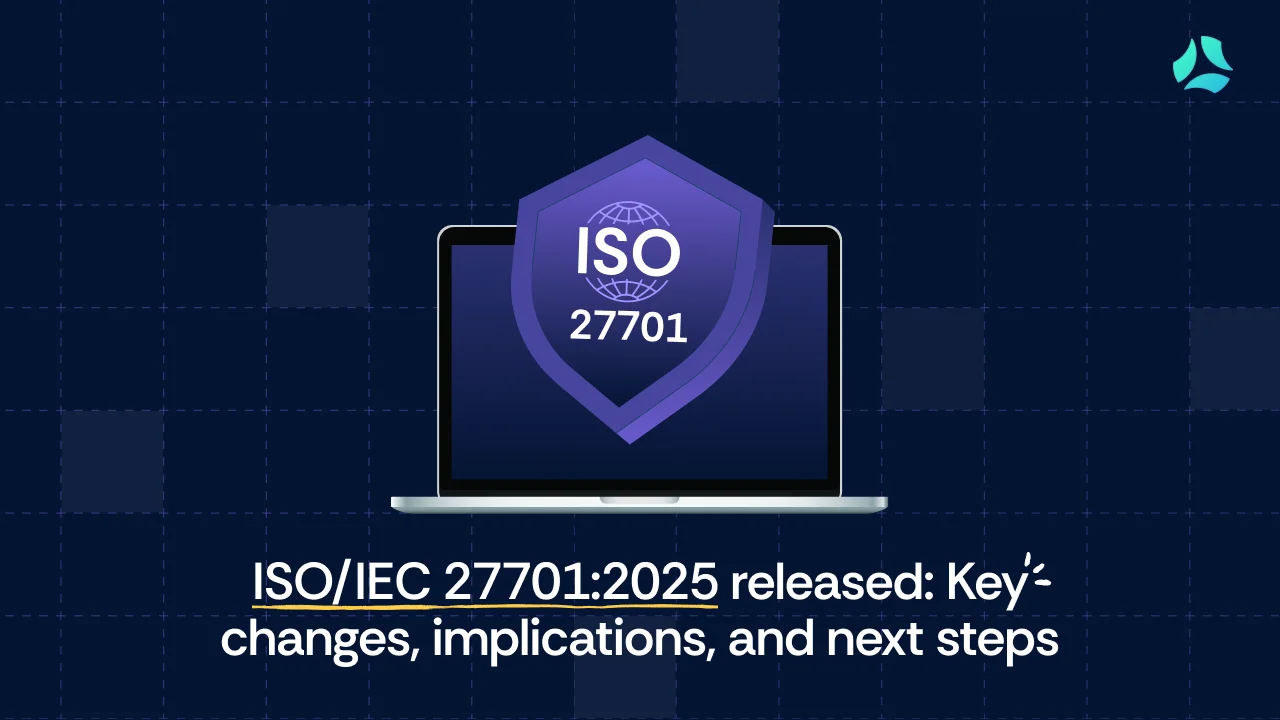Navigating data privacy in education records with FERPA

In the age of advanced AI tools and growing cybersecurity threats, protecting student data has become increasingly challenging. The Family Educational Rights and Privacy Act (FERPA), enacted to safeguard student records, is crucial for organizations operating in the education ecosystem. However, staying compliant isn’t always straightforward, especially with the rapid adoption of digital tools.
FERPA violations aren’t just about financial penalties—they damage trust and reputation, derailing progress in an industry where credibility is paramount. This guide explores the key challenges of FERPA compliance and offers actionable solutions to overcome them.
What is FERPA, and why does it matter in 2025?
FERPA is a U.S. federal law introduced in 1974 that protects the privacy of student education records. The act gives parents and eligible students (those over 18 years old) the right to access and control their educational information.
In 2025, as AI becomes integral to EdTech and organizations increasingly rely on digital tools to handle data, FERPA compliance is more relevant than ever.
Some key obligations under FERPA include:
- Limiting access to student records.
- Ensuring explicit consent before sharing information.
- Protecting records from unauthorized access or breaches.
Failing to comply with FERPA can lead to severe consequences, including:
- Fines and loss of funding for educational institutions.
- Reputational damage for EdTech providers.
- Legal liability, leading to lawsuits.
In 2025, with advancements in AI and rising data risks, EdTech companies must adopt robust compliance strategies that address traditional FERPA requirements and the unique challenges of modern technology.
FERPA compliance as a business opportunity
Beyond regulatory adherence, FERPA compliance presents a significant business advantage for EdTech companies, cloud service providers, and software vendors in the education sector. Compliance opens doors to larger contracts, partnerships with educational institutions, and long-term market credibility. Key benefits include:
Increased trust and market differentiation: Schools and universities prefer vendors that can guarantee FERPA compliance, giving compliant organizations a competitive edge.
Access to larger deals and partnerships: Many state and federal education contracts mandate FERPA-compliant solutions, creating new revenue opportunities.
Improved data security and resilience: A robust FERPA framework strengthens data protection measures, reducing the risk of breaches and legal disputes.
As cyber threats grow, compliance isn’t just about avoiding penalties—it’s about establishing a trusted brand in the EdTech ecosystem.

Key FERPA compliance challenges (and how Scrut helps overcome them)
Challenge 1: Safeguarding sensitive data from cyber risks
AI-powered tools are reshaping education but also increasing the surface area for cyberattacks. Hackers targeting student records can exploit vulnerabilities, leading to FERPA violations.
How Scrut helps:
- Automated cloud and application tests: Continuously scan systems to identify and mitigate vulnerabilities.
- Access reviews: Enforce least-privilege access policies to ensure only authorized users handle sensitive data.
- Policy creation and management: Build and manage FERPA-aligned policies that evolve with changing technology.
Real-world scenario:
An EdTech platform using AI-powered learning analytics discovers a potential breach in its data storage. With Scrut’s automated cloud tests and access reviews, the issue is flagged and resolved before student records are compromised.
Challenge 2: Managing third-party risk
Most EdTech companies rely on vendors for cloud storage, AI solutions, and analytics. However, these third parties can pose significant compliance risks, and managing their security posture is often complex and time-consuming.
How Scrut helps:
- Third-party risk management: Automatically assess vendors’ FERPA compliance through tailored questionnaires.
- Vendor follow-ups: Automate communications with vendors to ensure timely updates and compliance reporting.
- Risk scoring: Scrut assigns risk levels to vendors, helping organizations prioritize actions.
Real-world scenario:
An EdTech provider working with an AI vendor realizes the vendor isn’t fully FERPA-compliant. Scrut’s third-party risk management tools flag the issue, enabling the compliance team to address it proactively.
Challenge 3: Streamlining documentation and evidence collection
FERPA compliance requires extensive documentation and evidence collection, which can overwhelm teams and divert resources from strategic initiatives.
How Scrut helps:
- Automated evidence collection: Seamlessly gather FERPA compliance evidence, from policy documents to audit logs.
- Audit management: Simplify audit preparation by centralizing all compliance-related information in one place.
- Security awareness training: Equip employees with the knowledge to handle student data responsibly.
Real-world scenario:
A school undergoing a FERPA audit needs to provide records of access controls and compliance policies. With Scrut’s audit management feature, the compliance team presents the required evidence (including those of employee trainings being completed) efficiently, avoiding penalties.
A practical FERPA compliance checklist for 2025
Use this checklist to ensure your organization remains FERPA-compliant:
- Limit data access: Conduct regular access reviews to enforce least-privilege principles.
- Secure your systems: Continuously monitor and patch vulnerabilities in cloud and application environments.
- Train your team: Provide security awareness training focused on FERPA compliance requirements.
- Assess vendors: Evaluate third-party vendors for FERPA compliance using risk questionnaires.
- Document everything: Centralize policies, controls, and evidence for audits and compliance reviews.
The Scrut advantage for FERPA compliance
As FERPA compliance becomes a key enabler for growth, EdTech businesses must prioritize data protection to build trust and unlock new opportunities. Scrut simplifies compliance by automating key processes, managing third-party risks, and providing real-time insights.
As EdTech continues to evolve rapidly, compliance is no longer optional—it’s a business imperative. With Scrut, compliance teams can focus on what truly matters: delivering secure, innovative solutions for the education industry.
FAQs
1. What is FERPA and who does it apply to?
Family Educational Rights and Privacy Act (FERPA) is a U.S. federal law that protects the privacy of student education records. It applies to educational institutions and agencies that receive funding from the U.S. Department of Education and any third-party vendors that handle or process student education records on their behalf.
2. What are the key components of FERPA compliance?
FERPA compliance focuses on:
- Limiting access to student records.
- Obtaining consent before disclosing personal information.
- Maintaining transparency through proper record-keeping and audit trails.
4. How does FERPA apply to cloud storage providers?
Cloud providers storing or processing student records must comply with FERPA. Educational institutions must ensure contracts include clear terms regarding data security, access restrictions, and breach notifications.
5. What are the penalties for FERPA violations?
While FERPA does not impose direct fines, violations can lead to the loss of federal funding for educational institutions. Additionally, reputational damage and lawsuits are significant risks.
6. What role does the Risk Management module play in FERPA compliance?
FERPA necessitates the Risk Management module to identify, assess, and mitigate risks tied to student data security. Scrut provides visibility into high-risk areas and recommends tailored mitigation steps to protect sensitive data.
7. How can organizations ensure third-party vendor compliance with FERPA?
Scrut’s Third-Party Risk Management module allows organizations to assess, monitor, and manage vendor compliance. It automates vendor risk assessments so you can prioritize which vendors have access to student data.
8. What are the best practices for managing third-party vendor compliance under FERPA?
Educational institutions should:
- Conduct due diligence on vendors.
- Use tailored contracts with FERPA compliance clauses.
- Monitor vendor data access and activity regularly.


















